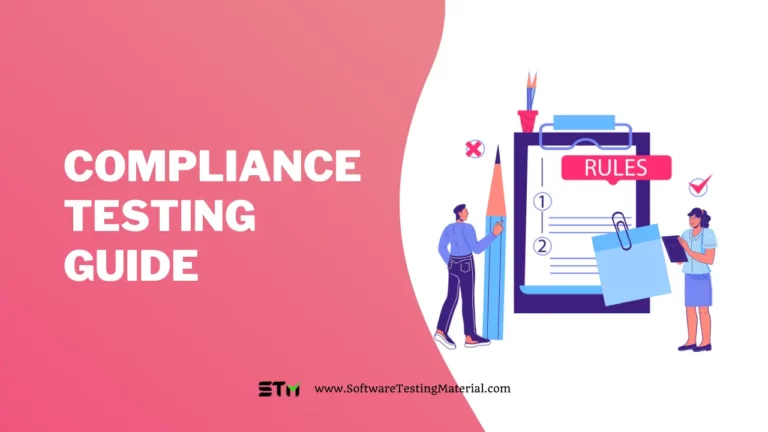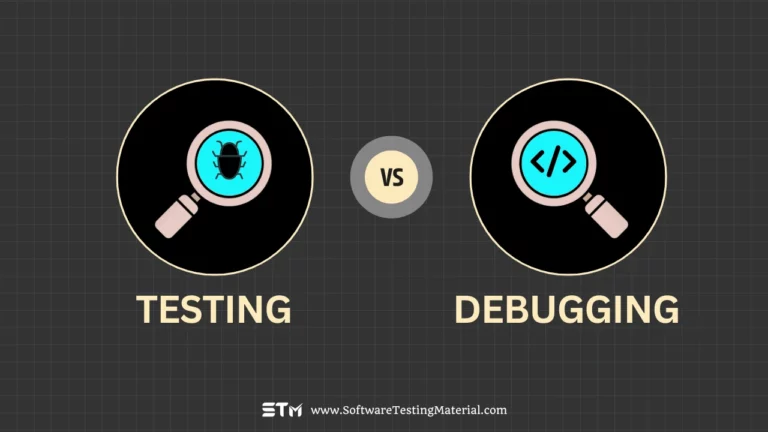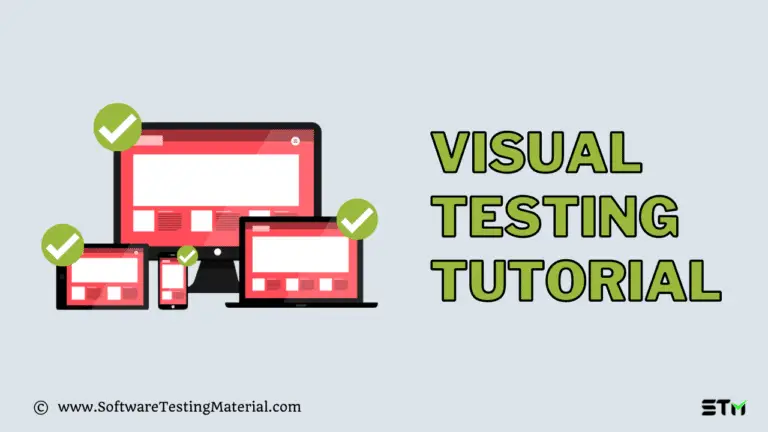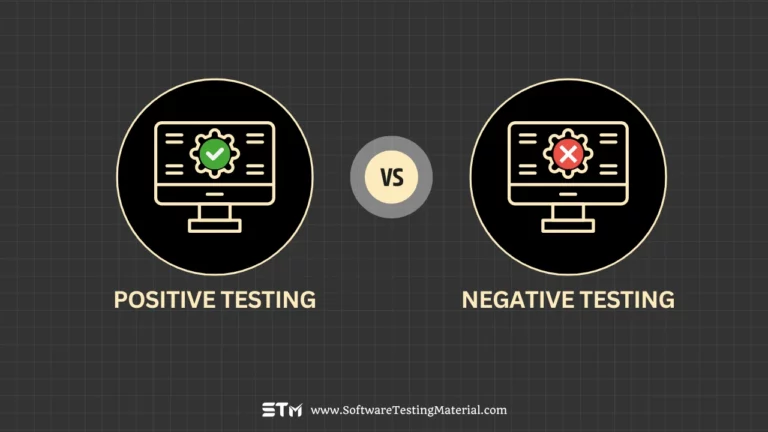Conventional Testing: A Comprehensive Guide to Traditional Software Testing Methods
Software testing has always been a vital component in ensuring the delivery of high-quality applications. While automation testing has transformed the testing landscape, traditional testing remains essential. It leverages the expertise of skilled testers to identify issues that might escape automated testing tools, ensuring a more comprehensive evaluation of software performance.
This article explores the importance of conventional testing, its core methodologies, and the critical role it plays in addressing complex testing requirements in the modern software landscape.
What is Conventional Testing?
Conventional testing, also known as manual testing, is the process of testing software applications manually without using any automated tools. It involves a person, usually a skilled tester, carefully checking the software to find bugs, errors, or usability issues. The tester follows a planned set of steps, often called test cases, to ensure that the software behaves as expected. This approach allows testers to focus on tricky scenarios, user experience, and areas where automation might not perform well. Conventional testing is important because it adds a human touch, helping to identify issues that automated tools might miss.
Stages in Conventional Testing
- Requirement Analysis: The first stage involves understanding the project requirements in detail. Testers study the specifications, business needs, and other documents to ensure they have a clear understanding of the application’s functionality and purpose.
- Test Planning: During this stage, a detailed test plan is created. It includes defining the testing objectives, scope, resources, schedule, and strategies. Testers determine which types of tests to perform and identify the tools and techniques to use.
- Test Case Design: Test cases and scenarios are developed based on the requirements. These test cases outline step-by-step instructions to validate the functionality and performance of the application.
- Test Environment Setup: The test environment is prepared to replicate the actual production settings. This may involve configuring hardware, software, network parameters, and other necessary resources to ensure realistic testing conditions.
- Test Execution: Testers execute the test cases on the application. They manually interact with the software, following the predefined scenarios, and document any defects or issues they encounter.
- Defect Reporting: If any defects are identified during test execution, they are documented and reported to the development team. Each defect is categorized and prioritized for fixing.
- Test Closure: This final stage involves reviewing the testing process, validating that all critical issues are resolved, and preparing a test summary report. Testers also evaluate what worked well and identify areas for improvement in future testing activities.
By following these stages, conventional testing ensures a thorough assessment of software quality.
How to Do Conventional Testing?
To perform Conventional Testing, follow these steps:
- Requirement Analysis: Start by understanding the project requirements thoroughly. Review the specifications and identify what needs to be tested. This will help you create clear test cases that cover all scenarios.
- Test Planning: Create a detailed test plan. This includes deciding the scope of testing, defining the objectives, selecting the testing tools (if needed), and assigning responsibilities to the team members.
- Test Case Design: Write test cases based on the requirements. Make them simple, clear, and easy to execute. These test cases should verify all functionalities of the software to ensure it works as expected.
- Environment Setup: Prepare the testing environment by installing the necessary software, hardware, and configurations. Ensure it resembles the production environment for accurate results.
- Test Execution: Execute the test cases step by step. Note down the results for each test case. Any discrepancies or failures should be recorded for analysis.
- Defect Reporting: If any bugs or issues are found, document them clearly with details like steps to reproduce, screenshots, and expected vs. actual results. Share these with the development team for resolution.
- Bug Verification: Once the developers fix the reported bugs, re-test the affected areas to ensure the issues are resolved and have not caused new defects.
- Final Testing: Conduct a round of comprehensive testing, including regression testing, to make sure the software is stable and meets the quality standards.
- Documentation and Handover: Prepare a summary of the testing activities, test results, and defect resolution status. Share this report with stakeholders and ensure the product is ready for deployment.
By following these steps, you can perform Conventional Testing effectively and contribute to delivering a high-quality software product.
Types of Conventional Testing
Here are the main types of conventional testing:
- Unit Testing: This type of testing focuses on individual components or modules of the software. Each part is tested separately to ensure it works as expected. Learn more about Unit Testing here.
- Integration Testing: Integration testing checks if different modules or components of the software work well together when combined. Learn more about Integration Testing here.
- System Testing: System testing evaluates the complete system as a whole to verify that it meets all the specified requirements. Learn more about System Testing here.
- Acceptance Testing: Acceptance testing ensures the software is ready for release by checking if it satisfies the user or client’s requirements. Learn more about Acceptance Testing here.
- Regression Testing: Regression testing is performed to verify that new changes or updates do not negatively impact the existing functionality of the software. Learn more about Regression Testing here.
- Performance Testing: This type of testing examines how the software performs under different conditions, such as heavy load or limited system resources. Learn more about Performance Testing here.
- Smoke Testing: Smoke testing is a quick check to ensure that the most important functions of the software are working properly. Learn more about Smoke Testing here.
- Sanity Testing: Sanity testing is a focused check on specific functionalities after changes are made to ensure everything is working as expected. Learn more about Sanity Testing here.
These types of testing are essential for delivering a high-quality, reliable software product.
Test Strategies for Conventional Software
Developing effective test strategies for conventional software is key to ensuring the quality and reliability of the final product. Here’s a guide to formulating robust test strategies for conventional (manual) software testing:
- Comprehensive Test Planning: Start with a detailed test plan that outlines the scope of testing, objectives, and methodologies. The plan should consider different aspects of the software, including functional, usability, and performance testing. It’s crucial to align the test plan with the overall project goals and user expectations.
- Prioritize Test Cases: Given the time-intensive nature of manual testing, it’s important to prioritize test cases based on factors like criticality, user impact, and risk. Focus on testing the most crucial functionalities first, especially those that directly affect the user experience or system stability.
- Employ Exploratory Testing: Encourage exploratory testing where testers have the freedom to experiment and explore different scenarios beyond predefined test cases. This approach can uncover unexpected issues and provide deep insights into the software’s behavior.
- Iterative Testing Approach: Implement an iterative testing approach, especially in agile development environments. Test early and often, starting with the basic functionalities and gradually expanding the scope as the software evolves.
- Manual Test Case Optimization: Regularly review and update the test cases to ensure they remain effective and relevant. Eliminate redundant tests and refine existing ones for better coverage and efficiency.
- Cross-functional Collaboration: Foster strong collaboration between testers, developers, and other stakeholders. Regular communication helps in clarifying requirements, addressing issues swiftly, and ensuring a shared understanding of the project objectives.
- Risk-based Testing: Focus on risk-based testing where testing efforts are directed towards areas of the software that pose the highest risk in terms of failure or impact on users. This ensures efficient use of resources and maximum mitigation of potential issues.
- Usability and Accessibility Testing: Pay special attention to usability and accessibility testing. Manually test the software from an end-user’s perspective to ensure it is intuitive, user-friendly, and accessible to all users, including those with disabilities.
- Documentation and Reporting: Maintain thorough documentation of test cases, results, defects, and other relevant information. Effective reporting helps in tracking progress, making informed decisions, and facilitating knowledge transfer.
- Leverage Feedback Loops: Utilize feedback from users and stakeholders to continuously improve the testing process. User feedback, in particular, can be invaluable in identifying areas for enhancement in the software.
Advantages of Conventional Testing
Conventional testing offers several unique advantages that make it an essential part of the software testing process. Here are its key advantages:
- Proven and Reliable Approach: Conventional Testing methods have been used for a long time and are well-understood, making them reliable for identifying defects.
- Thorough Coverage: Testers can create detailed test cases to ensure every part of the application is checked properly.
- Structured Process: Conventional Testing follows a systematic workflow, which makes it easier to track progress and maintain quality.
- Independent Testing: Dedicated testing teams perform the tests, providing an unbiased perspective and ensuring better quality.
- Easier Documentation: The formalized approach of Conventional Testing makes it simpler to document test cases and results, which helps in audits and future reference.
- Effective for Stable Requirements: It works well when the application requirements are stable and do not change frequently.
- Focus on Quality Assurance: The step-by-step testing process ensures that the final product meets all required specifications and standards.
Disadvantages of Conventional Testing
Although Conventional Testing provides numerous benefits, it also has its limitations that need to be considered. Here are some of the main disadvantages:
- Time-Consuming: Conventional testing often requires manual effort, making it a time-intensive process, especially for large or complex applications.
- Prone to Human Error: Since it relies heavily on manual execution, there is a higher chance of human error during testing, which could lead to missed bugs or inaccurate results.
- Limited Coverage: It can be difficult to cover all test scenarios and edge cases manually, leading to gaps in test coverage.
- Repeated Effort: Testing the same scenarios repeatedly, such as during regression testing, can become tedious and lead to diminished efficiency.
- Scalability Challenges: Conventional testing struggles to meet the demands of rapid development cycles in agile or DevOps environments, making it less scalable.
- High Costs: The need for skilled testers and significant effort can lead to higher costs in the long run compared to automated testing.
- Slower Feedback: Without automation, the feedback loop to developers is slower, which can delay bug fixes and impact project timelines.
Challenges Associated With Conventional Testing
- Time-Consuming: Conventional testing methods often require significant time to manually execute test cases, especially for large and complex software.
- Prone to Human Error: Manual processes can lead to mistakes, such as missing steps or recording incorrect results.
- Lack of Scalability: It is difficult to scale conventional testing methods when the software grows in features or complexity.
- Difficulty in Regression Testing: Repeating manual tests for every update is tedious and increases the chances of overlooking issues.
- Resource-Intensive: Conventional testing often demands considerable human effort, leading to higher costs and extended timelines.
- Limited Coverage: Achieving comprehensive test coverage can be challenging due to time constraints and the inability to test every possible scenario manually.
- Not Ideal for Frequent Iterations: With agile or continuous integration workflows requiring constant updates, managing manual testing for frequent iterations becomes inefficient.
- Slow Feedback Loop: Manual testing delays feedback to developers, slowing down the development process.
- Static and Repetitive Tasks: Testers often spend time on repetitive tasks instead of focusing on identifying critical bugs or improving test strategies.
FAQs
What are the differences between conventional and unconventional testing?
Conventional testing follows a structured approach, usually starting after the development phase, and focuses on ensuring the software meets requirements. Unconventional testing, on the other hand, may involve testing early in the development process, exploring innovative methods, or uncovering issues that go beyond predefined tests and requirements. It emphasizes creativity and finding unexpected flaws.
What are the differences between Cloud Testing Vs. Conventional Testing?
Cloud testing and conventional testing differ mainly in their approach and infrastructure. Cloud testing uses cloud-based environments, making it scalable, cost-effective, and accessible from anywhere, while conventional testing relies on physical infrastructure and local setups. Cloud testing supports dynamic resource allocation and faster deployment, whereas conventional testing can be limited by hardware and location constraints.
What are the differences between Object-Oriented Testing and Conventional Testing
Object-oriented testing focuses on testing the interactions between objects, as well as individual class behaviors and relationships within object-oriented programming. It emphasizes testing methods, inheritance, polymorphism, and encapsulation. Conventional testing, on the other hand, is more concerned with testing standalone functions, modules, and the overall functionality of the software without considering object-specific features.
Conclusion
Conventional testing plays an important role in ensuring the quality and reliability of software. While it may have some limitations, such as the time and effort required, its value in uncovering complex issues and providing human insights cannot be overlooked. By combining conventional testing with automated methods, teams can create a balanced approach that maximizes efficiency and minimizes risks. Ultimately, the key is to understand the unique strengths of each method and use them together to deliver the best possible product to users.


![Software Test Plan Template with Detailed Explanation [Sample Test Plan Document]](https://www.softwaretestingmaterial.com/wp-content/uploads/2015/12/test-plan-template-768x432.png)



